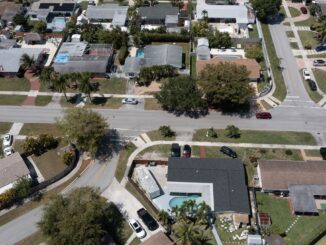
In accordance with the Dodd-Frank Wall Street Reform and Consumer Protection Act, Fannie Mae has released a new version of its 2022 Stress Test Disclosure, which reflects two hypothetical economic scenarios, including a “severely adverse” scenario.
The report was initially released in August 2022, but Fannie Mae announced in November that it had made a “recent identification of errors in an underlying model.” This led the GSE to advise against “rely[ing] on the information in [the] report for any purpose.”
The annual Dood-Frank Act Stress Test (DFAST) is designed to “assess capital adequacy over a nine-quarter projection period from Q1 2022 to Q1 2024.” It summarizes the results based on a “severely adverse” scenario prescribed by the Federal Housing Finance Agency (FHFA) based on a hypothetical scenario that illustrates the resiliency of the model to challenging economic conditions.
The FHFA assigned the adverse scenario based on three general criteria: macroeconomic variables, interest rate variables and a global market shock.
Under the hypothetical macroeconomic variables, residential home prices have declined 29%; commercial real estate prices have dropped 35%; real GDP has declined by 4%; and the unemployment rate has reached 10%.
Under interest rate variables, mortgage rates would hypothetically have risen 0.8%; the 10-year Treasury yield will have dropped 0.9%; and there is no change in the 3-month Treasury rate.
Under global market shocks, there is only one criteria under the adverse scenario: a drop in prices in residential mortgage-backed securities (RMBS) by up to 85%.
The impact of the severely adverse scenario is detailed in two ways in the updated report: without a valuation allowance (VA) established on deferred tax assets, and with a VA established in Q1 2022.
Without the establishment of a VA, “Fannie Mae would recognize $13.2B of cumulative comprehensive income over the hypothetical stress scenario,” the updated results state. With the establishment of a VA, “Fannie Mae would recognize $1.3B of cumulative comprehensive loss over the hypothetical stress scenario.”
The original report issued in August identified $9.5 billion in theoretical net income without the establishment of a VA, and a $6.3 billion loss with the establishment of a VA.
The FHFA said that the report and its findings “should not be viewed as forecasts of expected or likely outcomes for Fannie Mae.”



